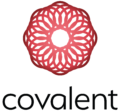Home » News and Updates » Covalent’s Guide to Digital Trends
Covalent’s Guide to Digital Trends

The digital landscape is in a constant state of change. New social platforms, shifting algorithms and the evolving consumer journey are just a few of the challenges presented to businesses in the digital era. Here’s a look at five important digital practices small businesses must consider when engaging with potential consumers and how Covalent is prepared to help.
Embrace Influencer Marketing
It’s the “Tik Tok made me buy it” era of digital advertising. The emergence of social media influencers opened another avenue for businesses to connect with customers and showcase products or services. Social media influencers are now a core part of the marketing structure of successful businesses. In the modern world, Facebook, Twitter and other social media platforms have flat-out replaced websites for some businesses and act as a “digital storefront” of sorts.
While partnerships with macro-influencers who reach tens of thousands of people are ideal, small businesses can focus on micro-influencers and even nano-influencers to drive sales and engagement in an equally impactful way. These smaller-scale influencers are community-focused and hold more legitimacy, relatability and relevancy for your audience. Consumers appreciate authenticity in advertisements and localizing social ads through community leaders and influencers accomplishes just that.
Optimize Website Loading Times
Consumers have limited patience and will look to other resources if they can’t find their information instantly. According to LoadStorm and Econsultancy, one in four web visitors said they would abandon a website if it takes more than four seconds to load. More so, a mere one second delay reduced customer satisfaction by up to 16 percent. It’s critical for businesses to optimize their website loading times and ensure the consumer stays on their website.
There is no better indication of this trend than the rise of bounce rates in the digital era. A bounce is a single-page session on a website. For example, if a consumer types a question into a search engine, clicks on a link and immediately leaves the website, that qualifies as a bounce. Web pages with a loading time of three seconds or more equate to a bounce rate of 40 percent, according to WebsiteBuilderExpert.
You want the consumer to be in control of his or her web session. Slow loading times disrupt it.
Optimizing the loading times of your website, which enables consumers to quickly find information and continue through to other pages on the site, helps lower the bounce rate.
Track the Consumer Journey
The digital era produced a consumer journey which is no longer linear. “See product, buy product” no longer exists. The relationship between businesses and consumers is complex and multifaceted and it is critical for businesses to understand how consumers arrive at purchase decisions.
Consumers require at least 10 ad exposures prior to considering a purchase, according to New Neuromarketing. Product awareness is not conducted through a single ad. It requires advertising repetition and multiple access points for consumers. Although a user on Instagram might view your ad on Tuesday, he or she might not see the one posted Wednesday or vice-versa.
Consumers view hundreds of ads per day from different brands (often with competing products) and are unlikely to make purchase decisions based on a single post. However, a Facebook ad seen Monday in tandem with an email ad Tuesday and a sponsored Twitter post Wednesday empowers the consumer to make an informed purchase decision and the business to increase its ad conversion rate.
Respond and Adapt to the Work-From-Home Trend
Work environments changed drastically as a result of the pandemic and, although there is little consensus as to what traditional workspaces will look like post-pandemic, one aspect appears to be a guarantee — the work-from-home trend is here to stay.
According to The Harris Poll, 61 percent of employed Americans are working from home as a result of the pandemic. More than four in 10 employed Americans said the WFH trend has created a positive or very positive impact on their work-life balance.
Working from home leads to more time spent online, browsing, shopping, etc. Businesses must adapt to the natural increase in online availability of consumers and develop unique “touchpoints” — digital spots where potential customers can come into contact with its products or services.
Audit Your SEO
It is crucial for small businesses to consistently audit their search engine optimization (SEO) in order to boost the ranking of its website and content on search engines. A significant part of a successful SEO plan is keyword research, which is the discovery of common words or phrases consumers enter into search engines when seeking information about your product or those like it. In order to attract people to your website, keywords must be purposeful, impactful and catered to the interests of your potential consumers.
Strong, specific and relevant keywords help search engines determine the value of the content on your business’ website and will, in turn, make it appear higher on the results page.
It’s time for your business to adapt, engage with new consumers and build a stronger identity online. Join Covalent’s growing network and work with a talented fellow who will support your digital marketing needs for eight weeks. Covalent is uniquely positioned to help small businesses navigate the challenges posed by the digital-first era. From website development and SEO to email marketing, brand strategy and social media, Covalent is proud to offer a wide range of services to help small businesses realize their digital goals.
Click here to get started.
